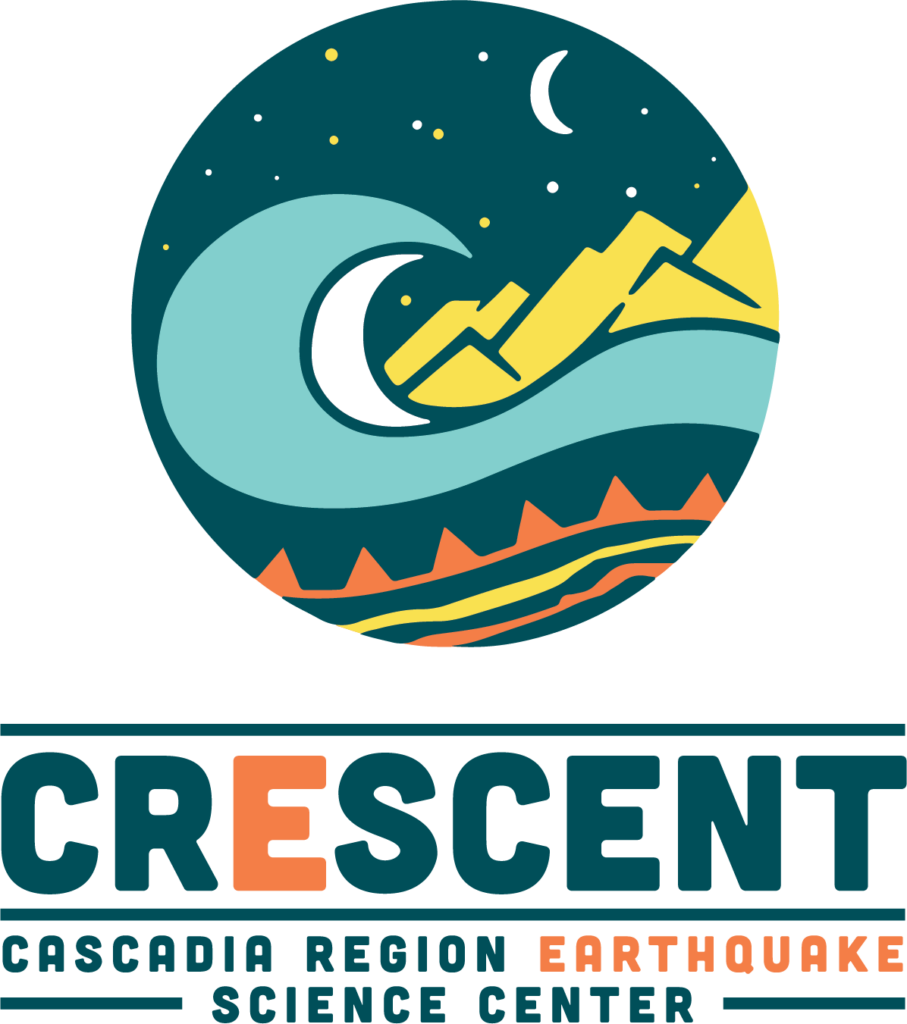
Connect with us
News, Events and Announcements

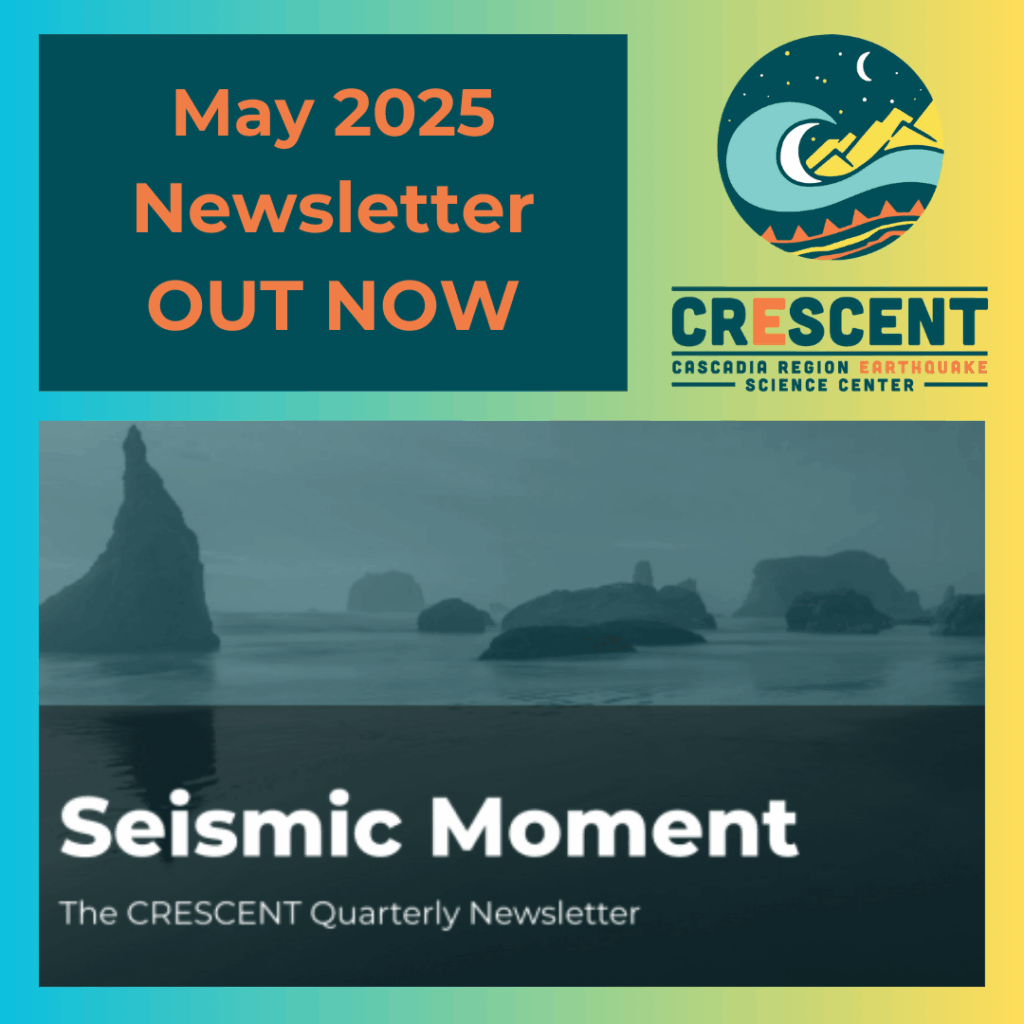
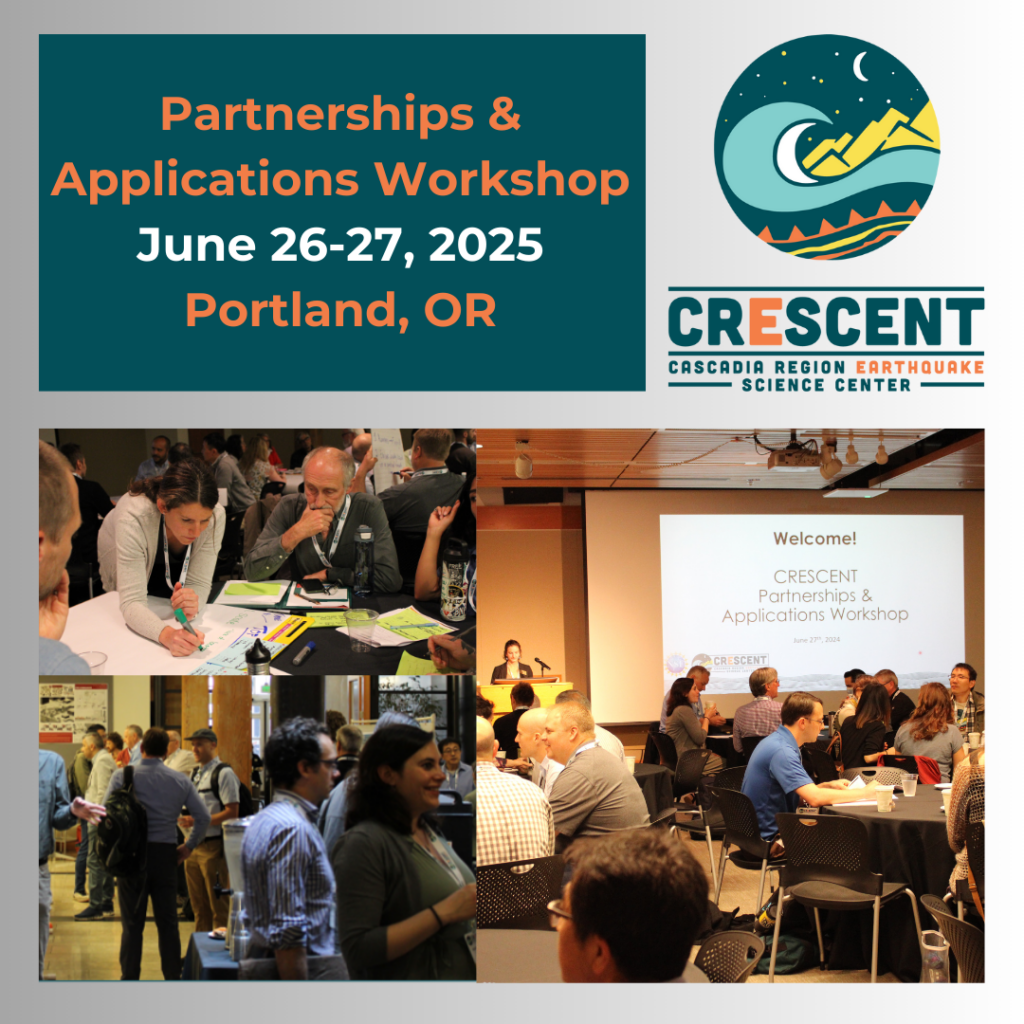
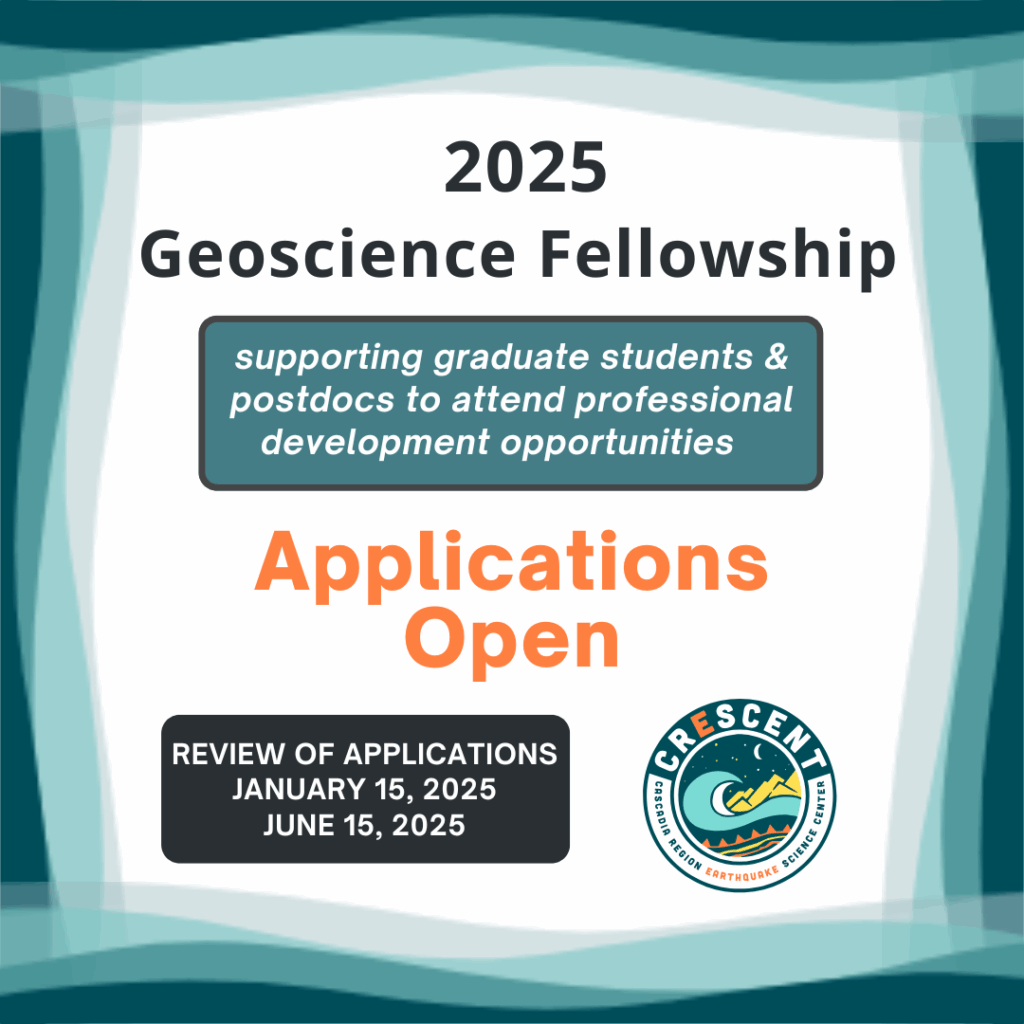
Cascadia’s seismic past
Great Earthquakes in Cascadia

Cascadia is an unusual subduction zone; it has low levels of seismicity and has not generated a significant megathrust earthquake in historic times. For years, scientists debated whether the Cascadia Subduction Zone was even capable of generating large magnitude earthquakes. Its earthquake potential was established in a detective story involving multiple lines of evidence — including orphan tsunamis in Japan and coastal “ghost forests” — pointing irrevocably to a M9 event on the evening of January 26, 1700.
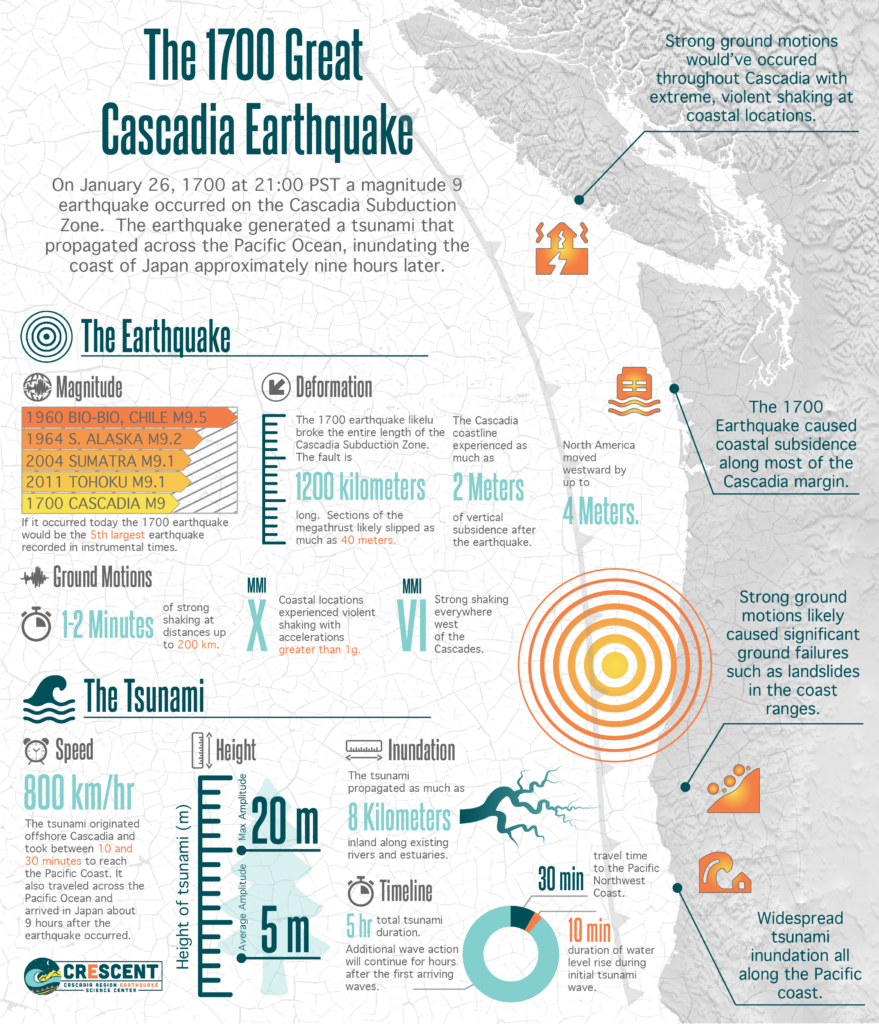
Cascadia’s seismic future
Earthquake Impacts

If an earthquake identical to the 1700 Great Cascadia earthquake were to occur today it would have significant impacts. Recent evaluations estimate more than ten thousand casualties resulting from the earthquake and accompanying tsunami. Thousands of buildings will be destroyed and thousands of households will be displaced. Depending on location it can take weeks to years to restore basic utilities such as drinking water and sewer service.
Over the years, efforts have been made to improve preparedness and resilience, with authorities conducting extensive research, public education, and emergency planning. However, the scale of the potential earthquake and accompanying tsunami poses significant challenges. Ongoing educational campaigns, investment in infrastructure, early warning systems, and community readiness are vital to enhance the region’s preparedness for such an event.
A call to action
The Cascadia Region Earthquake Science Center

In 2023, the National Science Foundation awarded $15 million dollars to establish the Cascadia Region Earthquake Science Center, CRESCENT. CRESCENT is the nation’s first subduction zone earthquake hazards center — a nexus for earthquake science and hazards research. CRESCENT has three overarching goals:
- To develop a better foundational understanding of Cascadia Subduction Zone earthquakes and their associated hazards and to transfer this knowledge to other subduction zones
- To promote diversity and to train the next-generation of geoscientists to address the challenges presented by our dynamic planet
- To provide a systematic approach to collaboration between researchers in academia and those in agencies that have mandates to produce hazard information that stakeholders, practitioners, and the public at large can trust and use
Please join us as we establish a new paradigm of collaborative Earth science research for societal good.
